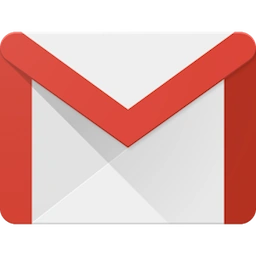From Postfix to GMail
FOSS in the SaaS era
Avishai Ish-Shalom (@nukemberg)


IANAL

My Lawyer insists I put a disclaimer
Free Software
A program is free software if the program's users have the four essential freedoms:
- The freedom to run the program any way you want
- The freedom to study the program and change it
- The freedom to redistribute copies
- The freedom to distribute your modified versions to others
- Adapted from the GNU philosophy page
Copyright & Copyleft
- Copyright - the right to control distribution, derivation and licensing
- Copyleft - a "viral" license based on copyright:
Any derived work that is distributed must have the same license
GPL licenses depend on strong Copyright protection
Derivative work
- "Derivative work" is not clearly defined
- "Modification" is the preferred term
- GPL versions differ on this
- Generally, we have:
- Linking (dynamic/static)
- Changing the code
- Aggregation (e.g. a distro)
Using GPL software
A very common question: If I use a GPL program to build a larger product, must the product be GPL too?
- Static linking of a library: Yes
- A Required dynamic library: Yes
- An optional dynamic library: Unclear*
- Use over network: No
*Various "linking exceptions" may apply
Let's pause and give thanks to

St. Richard The Hippy
Fast forward to 2007
Software is no longer distributed
SaaS replaces desktop applications
- Office -> Google Docs/Office 365
- Outlook -> GMail
- SugarCRM -> Salesforce
No "distribution"
- No distribution -> No source released
- SaaS vendors heavily use OSS but do not contribute back
- Users are completely dependent on the vendors
This is known is "The SaaS loophole"
Affero GPL (AGPL)
- Basically GPL v3 with one more clause
- Use over the network is considered "distribution"
- Not in widespread use
Effort to resolve "The SaaS loophole". Largely failed.
The Dual License hack
- Release free version under AGPL
- Grab modifications from users
- Sell proprietary software with commercial license
- Profit
Example: MongoDB
AGPL forces users to release their modifications. But the copyright holder can dual release a commercial/proprietary version
Why is "The SaaS loophole" bad for FOSS?
SaaS companies love FOSS
- Infrastructure is not their core business
- Reduce development costs
- No vendor lock-in
- No license fees
- Can be adapted for internal needs
But SaaS companies don't have to give back
- Modified software only used internaly
- No legal requirement to release modifications
- Some motivations for contributing back:
- Upstream support
- PR & recruitement
Example: Microsoft Azure Cloud Switch
Various approaches
- FOSS everything that's not core business (Netflix)
- FOSS when it makes sense (Facebook)
- FOSS strategically (Microsoft, Google)
- FOSS only if no other choice (Oracle)
"Crippleware"
FOSS Crippleware: A FOSS software which cannot be used without proprietary components
3 easy ways to cripple FOSS
- Move features to SaaS backend
- Depend on large/proprietary datasets
- Depend on specific hardware

Android
- Important functionality in proprietary apps (Google apps)
- Basebands, drivers not always FOSS
- Hardware lockdowns
Android Google Apps
- Most are opensource
- Some completely useless without the backend
- Voice Dialer
- Sync
- Some only crippled without the backend
- Calendar
- Gallery
Who owns the data?
The Waze case
- Originaly - "freemap" FOSS client
- But backend was proprietary
- Data collected from users
but owned by a private entity - Migrated to non FOSS client
Data dependencies
- Fonts, images
- Datasets
Often served over CDN, blocking offline use
Example: Google Charts
Machine Learning
Data->Learning -> Model -> Application
- The model is expensive to build
- Data may be proprietary
- The Application is useless without the model
Example: Voice recognition
The Good

- SaaS companies use FOSS heavily
- SaaS companies contribute to FOSS
- The desktop Linux is finally here (sort of... Android)
- A working business model for FOSS
The Bad

- SaaS companies leach FOSS
- Many FOSS projects become unusable
- SaaS undermines the FOSS model
- Nasty hacks around FOSS licenses
The Ugly

- If you use SaaS, you've lost the FOSS freedoms
- SaaS companies release FOSS libraries but not products
- Many FOSS projects are very hard to get working on your setup
Questions?

From Postfix to GMail
By Avishai Ish-Shalom
From Postfix to GMail
Open Source software in the SaaS era: A talk about the problems and challenges Open Source is facing in the SaaS era, namely SaaS vendors that are no longer obligated to release code and the shift to data focused applications.
- 2,041



